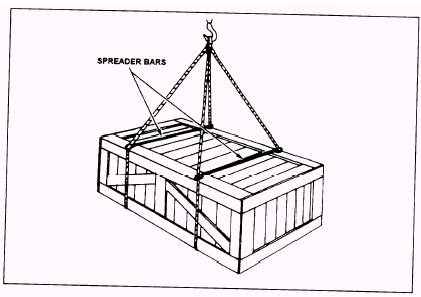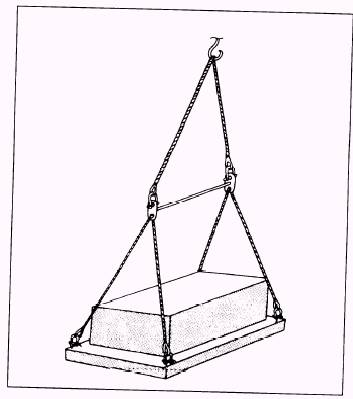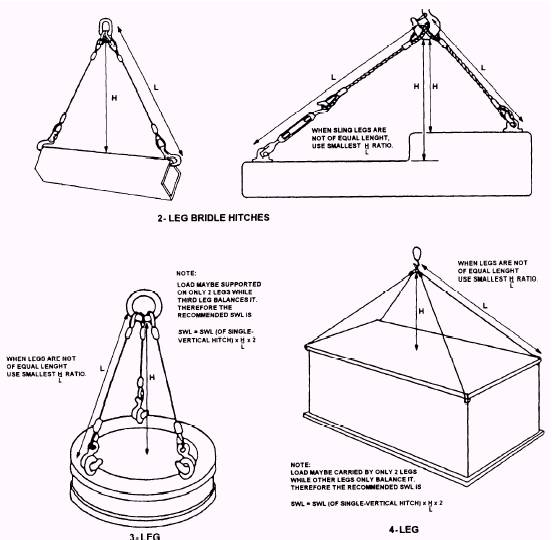|
Sling Angle When you are using slings, remember that the greater the angle from vertical, the greater the stress on the sling legs. This point is shown in figure 13-33. The rated capacity of any sling depends on the size, the configuration, and the angles formed by the legs of the sling and the horizontal. A sling with two legs used to lift a 1,000-pound object will have 500 pounds of the load on each leg when the sling angle is 90 degrees. The load stress on each leg increases as the angle decreases; for example, if the sling angle is 30 degrees when lifting the same 1,000-pound object, the load is 1,000 pounds on each leg. Try to keep all sling angles greater than 45 degrees; sling angles approaching 30 degrees are considered extremely hazardous and must be avoided.

Figure 13-33.-Stress on slings at various vertical angles.

Figure 13-34.-Using spreader bars.

Figure 13-35.-Spreader bar used with an oversized load.

Figure 13-36.-Determination of bridle hitch sling capacity. Spreaders Bars In hoisting with slings, spreader bars are used to prevent crushing and damaging the load. Spreader bars are short bars, or pipes, with eyes fastened to each end. By setting spreader bars in the sling legs above the top of the load (fig. 13-34), you change the angle of the sling leg and avoid crushing the load particularly in the upper portion. Spreader bars are also used in lifting long or oversized objects to control the sling angle, as shown in figure 13-35. When spreader bars are used, make sure you do not overload the end connection. A spreader bar has a rated capacity that is the same as hooks and shackles. A good rule of thumb is the thickness of the
spreaders end connection should be the same as the thickness of the shackle pin.
|

